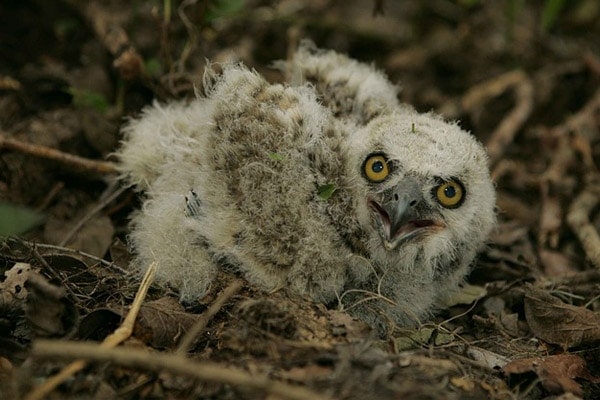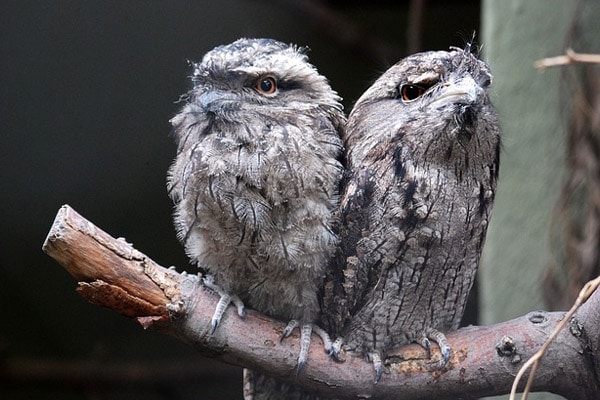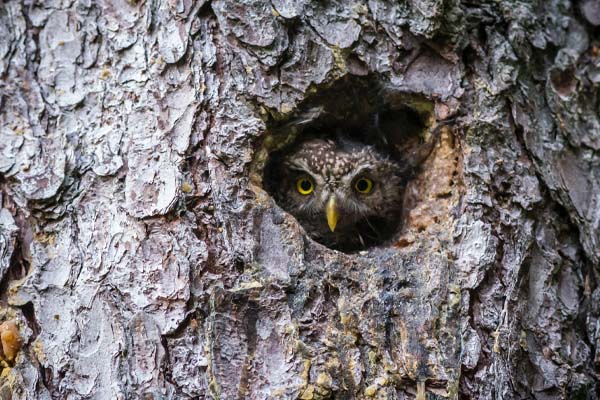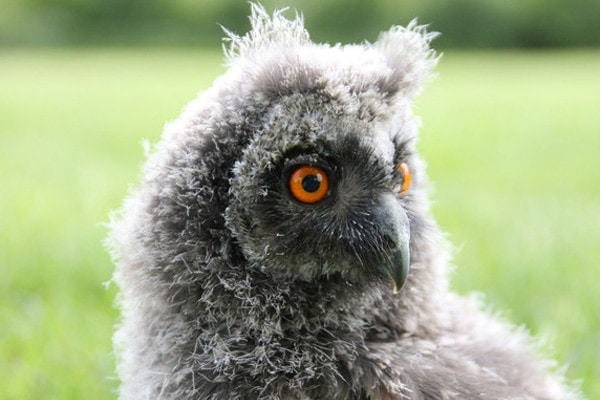Contents
Have you been wondering “When do owls have babies?“. Well, I had the same question so I took a little time to perform some research. Below, I will discuss some of the information that I found.
Owls mate once a year usually in spring. This may not be the case for all owl species but in general, owls find their mates in the spring. It will all boil down as to location. Those in warmer climates will mate and breed earlier than those in cooler weather. Once their primary needs such as food supplies are met, they will most likely join in mating. When mating is done, and the female lays her eggs, it takes 30 days for the eggs to hatch.
An owl’s mating cycle is one of the most-watched breeding cycles by many birders. It is very interesting and it teaches them a lot of things about an owl’s behavior. To talk more about that here are some of the things you might want to check out in this article:
- An owls mating and breeding cycle
- Hooting: their mating call
- Do owls mate for life?
- Where do owls nest?
Owls’ Mating And Breeding Seasons

Owls, as we know, are very independent creatures. Owls hunt and live day by day by themselves.
However…
There comes a time that they need to mate and make baby owls or owlets. This cycle comes only once a year. One thing to note about this season is that it doesn’t come at the same time for all owl species. In general, right about when spring starts is when owls start their mating rituals.
Some owls like the Great Horned Owl will breed in winter. That means that they start courting and building their nest in December.
By the way, if you want to attract owls to your yard, consider installing an owl nesting box.
They mate in winter because their hatchlings need to stay with their parents longer compared to all other birds. This is where they learn all the skills that they need to survive the next winter.
Here is a table that can best depict the breeding season of a number of owls:
| SPECIES | NUMBER OF BROODS | INCUBATION PERIOD | DATES WHEN THEY LAY EGGS |
| Barn Owl | 1-2 | 32-34 days | All months |
| Barred Owl | 1 | 21-28 days | 3/20-5/4 |
| Eastern Screech Owl | 1 | 21-26 days | 3/23-7/8 |
| Great Horned Owl | 1 | 30-35 days | 1/22-7/24 |
| Long-eared Owl | 1, occasionally 2 | 21-30 days | 3/21-5/23 |
| Northern Saw-whet Owl | 1 | 26-28 days | 3/31-6/11 |
| Short-eared Owl | 1, occasionally 2 | 24-28 days | 4/2-519 |
Life’s A Hoot
You have probably heard owls hooting and it is for good reason. When the mating and breeding season comes along, males will hoot to find females that are in their area. This hooting is one of the most common similarities that all owls have.
Check this article out if you ever wondered why owls hoot.
When they do find a mate with their hooting, they will bring their mates to their location because male owls are very territorial.
They will often hunt for the female and will still call to her after she has arrived. All of this is done to win over the female owl and get her consent to mate with him.
Do Owls Mate For Life?

Once they have found their pair, they will spend many days and nights with each other to mate.
Each male and each female mate with only one other owl per mating season. They mate, take turns taking care of the owlets until they are ready to fledge. Once they do, they go their separate ways and find another mate when the next mating and breeding season comes.
But…
Some owl species will have a mate for life. These are the Barn Owls, Barred Owls, Great Horned Owls, and Eastern Screech Owls.
For these species, mating for life is more of a practical move than an emotional one. Here are some of the reasons that they find a mate for a lifetime:
- They don’t like wasting time by finding a new mate every breeding season. So when the breeding season begins, they begin breeding immediately
- Some of these owl species don’t live for very long so finding a mate for life is more practical than having to look for one every time
- Years of practice together will make them elite owl parents and will make their owlets the best that they can be
- These owls are not migratory and it will just make more sense to stay and protect their nests that they have built and established for themselves. This really shows the territorial side of these owls
Do Owls Nest?

Owls are not much of nest builders. They’re what you might want to call opportunistic nesters. They will often use nesting sites of other birds or other owl species that are ready to be nested. They take over these abandoned nests and call it their own. Want to see owls right now? Click here to view our collection of live owl cams from various locations.
In contrast…
You can owls that breed and nest in open terrain. These owls are what you call ground nesters. One example would be the Snowy Owl. The Snowy Owl prefers the Arctic tundra where the female will use a hollow in the ground that they can scrape out and line with plant materials to make it more comfortable.
Short-eared owls will often nest in or beside tufts or patches of grass. This goes the same for the Long-eared Owls and the Tawny Owls on occasion.
But…
Much like the long-eared Owls and the Tawny Owls, much more owls prefer nests that have holes in them where they can keep their eggs and owlets safe and warm.
In these modern times, you can see owls nesting in similar environments like holes in barns and outhouses.
Some species like the Eagle-owl favors natural rock crevices and ledges.
Bringing It All Together
Just to tie things up, here are some pointers that you might want to remember from this:
- Owls are self-sufficient birds of prey. That is until they need to mate
- The mating and breeding season comes only once a year. Most usually in spring, with the exception of some species like the Great Horned Owl that mate in winter
- Owls don’t usually mate for life. Once the mating and breeding season is over, they fly off to their own territories until the next breeding season
- There are some that mate for life, but for practical reasons
- Owls are opportunistic nesters. They will nest in holes in trees, hollows on the ground, or even other nests from other birds that have been abandoned
Winter and spring is the best time for birders like you and me to go out and see what these mating and breeding rituals look like. Listen for the hoot!
Related Owl Articles:

